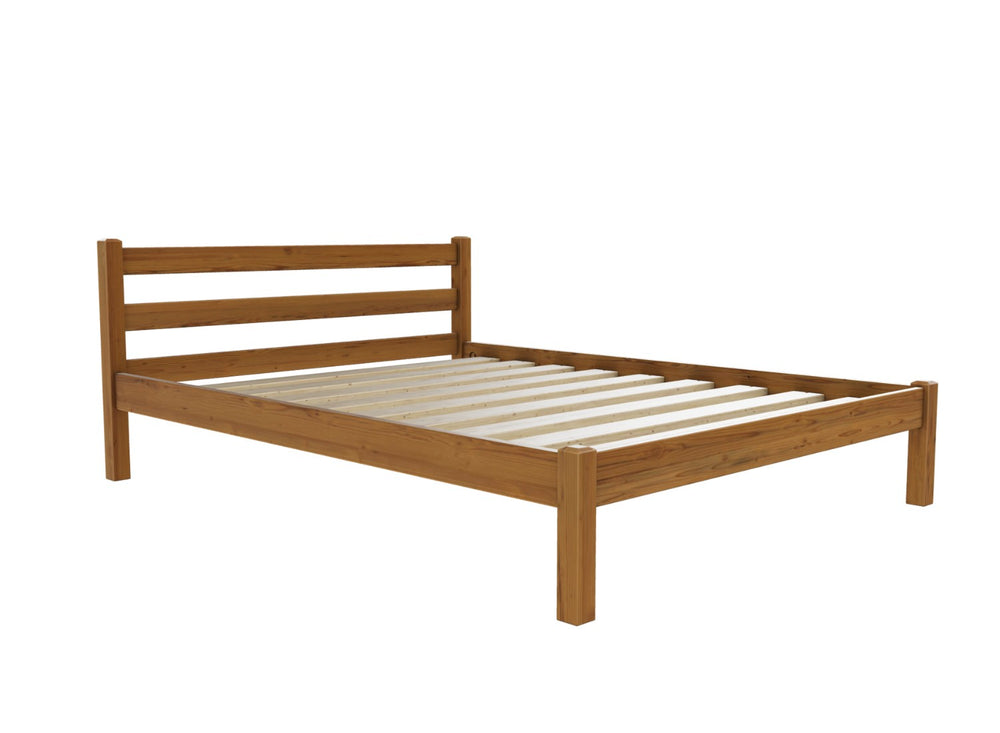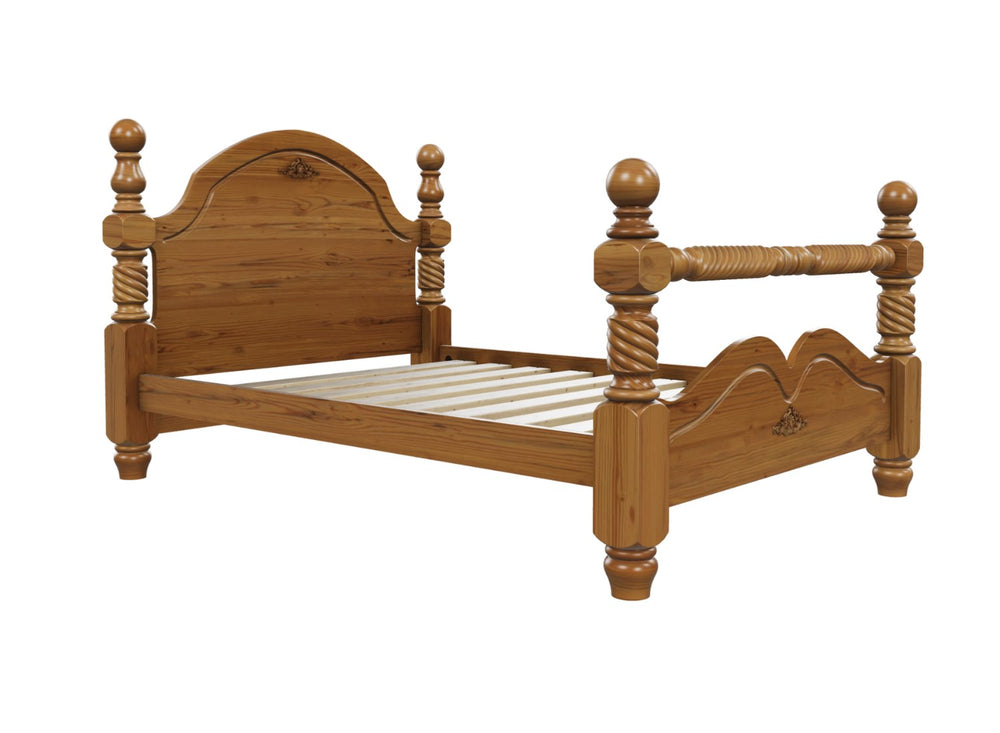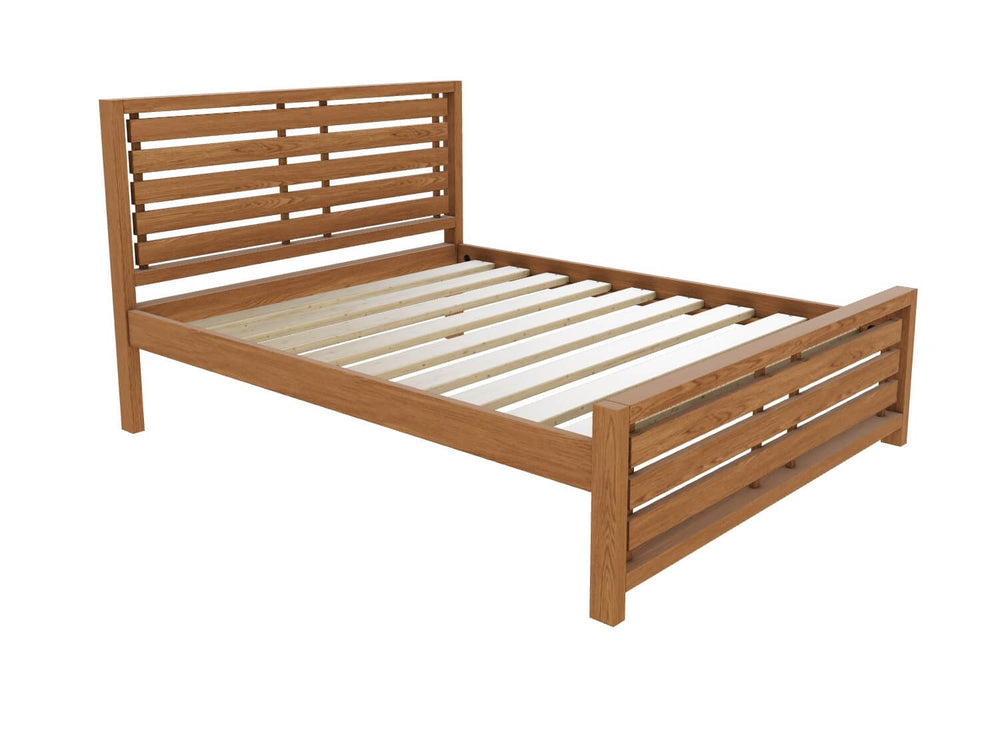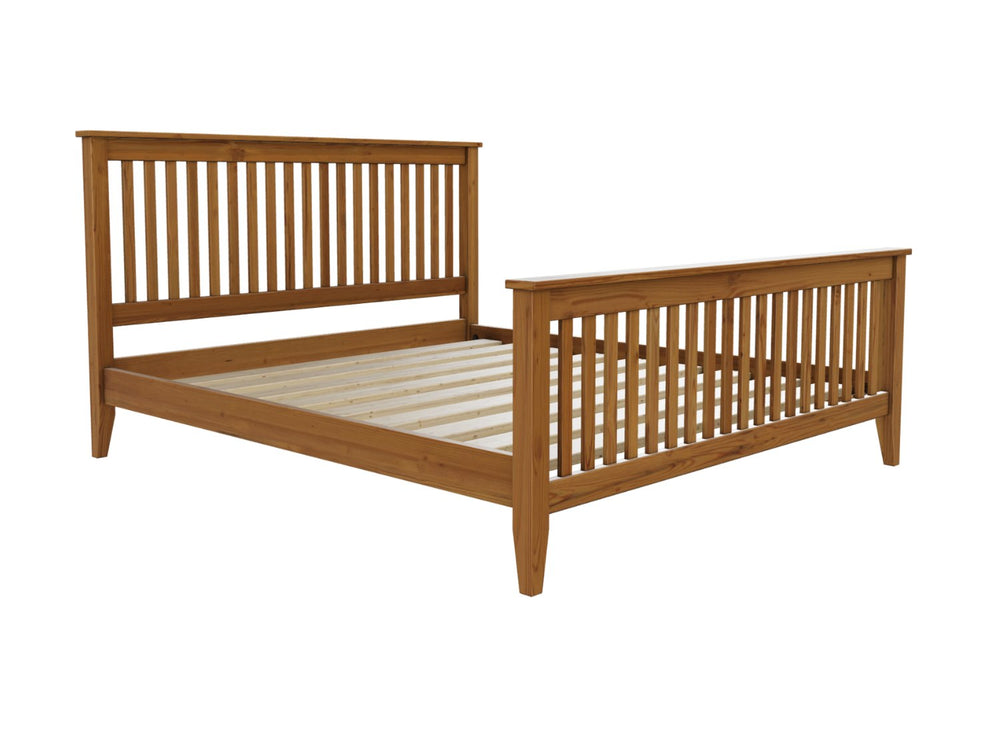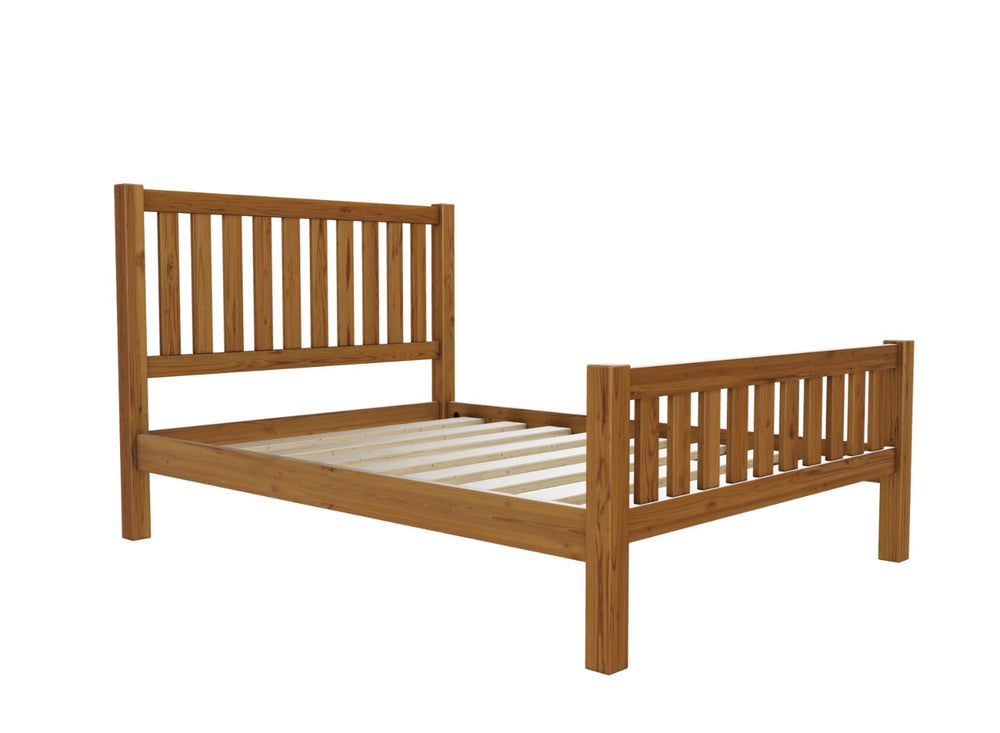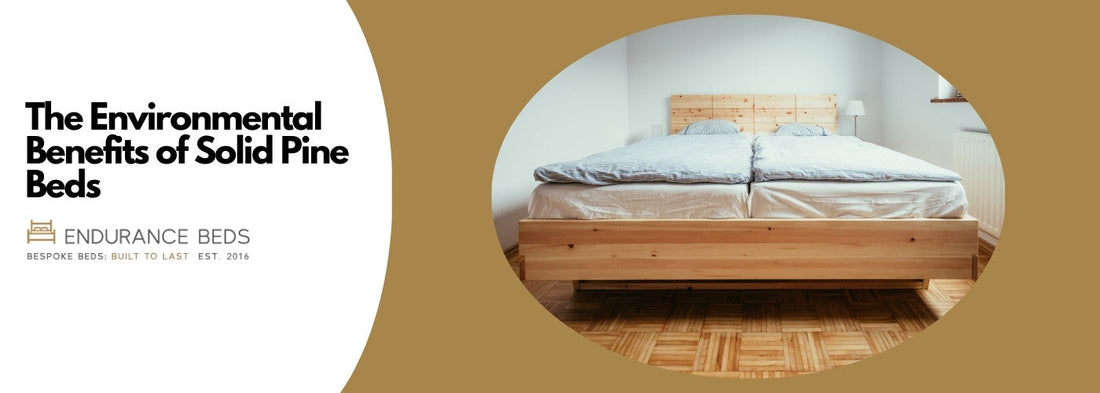
In today's world, where environmental concerns are at the forefront of consumer consciousness, choosing eco-friendly products has become increasingly important. One such choice in the realm of home furnishings is solid pine beds. Not only do they offer aesthetic appeal and durability, but they also come with a host of environmental benefits. In this blog post, we will explore the eco-friendly aspects of solid pine, focusing on sustainable sourcing and their low impact on the environment.
Sustainable Sourcing of Pine Wood
1. Renewable Resource
Pine is a fast-growing species of tree, making it a highly renewable resource. Unlike hardwoods that can take decades or even centuries to mature, pine trees reach maturity much faster, typically within 20-30 years. This rapid growth rate means that pine forests can be replanted and harvested on a more frequent cycle, ensuring a steady supply of wood without depleting natural resources.
Additionally, pine plantations can be managed to produce a continuous yield, allowing for the sustainable use of wood without causing long-term environmental damage. This contrasts with the harvesting of slower-growing hardwoods, which can lead to deforestation and loss of biodiversity.
2. Responsible Forestry Practices
Many manufacturers of pine beds source their wood from sustainable sources to ensure that the wood is harvested using sustainable practices that maintain the health of the forest ecosystem. Responsible forestry practices include:
-
Selective Logging: This method involves carefully selecting trees for harvest to avoid clear-cutting, which can devastate ecosystems. Selective logging ensures that younger trees have room to grow, maintaining the forest's overall health and biodiversity.
-
Maintaining Biodiversity: Certified forests are managed to protect wildlife habitats and promote a diverse range of plant species. This helps sustain the intricate web of life that relies on forest ecosystems.
-
Protecting Water Quality: Forest management practices also focus on protecting water bodies from pollution and sedimentation. This is crucial for maintaining the health of streams, rivers, and lakes that depend on forested areas.
3. Reduced Carbon Footprint
Pine trees play a significant role in carbon sequestration. As they grow, they absorb carbon dioxide from the atmosphere, which helps offset greenhouse gas emissions. By choosing pine beds made from sustainably sourced wood, consumers can contribute to the reduction of carbon in the atmosphere.
Additionally, the production process of pine generally requires less energy compared to other materials, further minimizing their carbon footprint. Pine wood can be processed using less intensive methods than metals or synthetic materials, leading to lower overall energy consumption and reduced environmental impact.

Product: Illington Wooden Bed Frame Finished in Oak Finish
Low Environmental Impact
1. Biodegradability
Solid pine beds are made from natural materials that are biodegradable. When these beds reach the end of their life cycle, they can be broken down by natural processes without leaving harmful residues in the environment. This contrasts sharply with synthetic materials that can persist in landfills for centuries. Pine wood decomposes naturally, enriching the soil with organic matter and nutrients, which supports new plant growth and maintains the health of ecosystems.
2. Durability and Longevity
One of the significant environmental benefits of pine beds is their durability. Well-crafted pine beds can last for decades, reducing the need for frequent replacements. This longevity translates to less waste and a lower overall environmental impact, as fewer resources are used over time. Investing in a high-quality pine bed means fewer pieces of furniture end up in landfills, and the continuous use of the same bed reduces the demand for new resources.
3. Minimal Chemical Use
The production of these beds typically involves minimal use of chemicals compared to other types of furniture. Pine wood can be finished with natural oils and waxes, which are less harmful to the environment than synthetic finishes. This means fewer pollutants are released during both the manufacturing process and the bed's lifespan. Natural finishes not only preserve the wood's beauty but also contribute to healthier indoor air quality by minimizing the emission of volatile organic compounds (VOCs).
Eco-Friendly Finishes and Treatments
1. Natural Oils and Waxes
Many pine beds are treated with natural oils and waxes, which enhance the wood's natural beauty without introducing toxic chemicals. These finishes are not only better for the environment but also safer for indoor air quality, making them a healthier choice for your home. Natural oils like linseed, tung, and walnut oil penetrate the wood, providing protection while allowing it to breathe, which helps maintain the wood's integrity and longevity.
2. Water-Based Stains
When stains or paints are used, eco-conscious manufacturers often choose water-based products. Water-based stains and paints emit fewer volatile organic compounds (VOCs) compared to oil-based alternatives, reducing their impact on air quality and human health. These finishes are not only more environmentally friendly but also safer for those applying them and for the residents who live with the furniture. Water-based products dry faster and have less odour, making them a practical and eco-friendly choice.
Conclusion
Choosing a solid pine bed is not just a decision for your home's aesthetics and comfort; it's also a choice that reflects a commitment to environmental sustainability. From the renewable nature of pine wood to the responsible forestry practices employed in its sourcing, they offer numerous eco-friendly benefits. Their durability, biodegradability, and minimal chemical use further enhance their environmental credentials. By opting for a solid pine bed, you are making a conscious effort to reduce your ecological footprint and contribute to a healthier planet.
Explore our collection of solid pine beds today and join us in making a positive impact on the environment.

Shane Cousins

Marketing Executive
For the past five years, Shane has been a valued member of the Endurance Beds team, drawing on his degree and background in consumer insight research to shape engaging, design-focused content. He loves helping customers spark their own creativity, from colour matching to discovering new stylistic approaches for their bedrooms. "Working for a bed company taught me so much more than just product details. It introduced me to the science of sleep, the art of product matching, and how small choices can transform rest. I’ve since developed into a bit of a sleep expert, using what I’ve learned to share honest, practical advice through my content."



